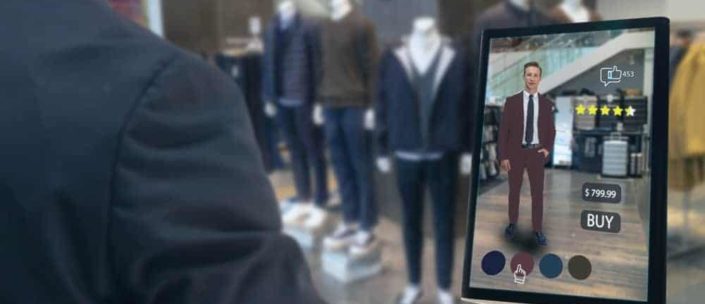Whether you’re just beginning to explore experiential marketing, or you’ve already done a few experiential campaigns, there are certain truths—and myths—that nobody explains to you. Until now, at least!
Experiential marketing can be a challenging thing to get right. For example, how do you measure impact? How much “marketing” should go into “experiential marketing”? How is an experiential campaign different from an event?
If you don’t have the answers to these questions, it’s easy to decide to forgo experiential campaigns altogether, and focus on something you’re more comfortable with and know how to measure—like social campaigns, or email marketing.
But that would be a mistake.
Here’s the thing: Experiential marketing works. The stats prove it:
- 65 percent of consumers say that a live event or demo helped them understand a product better than a commercial, according to EventTrack.
- 70 percent of experiential event attendees become regular customers after attending that event.
- The U.S. Bureau of Labor Statistics predicts that the event industry will jump 44 percent (2010–2020), surpassing most growth predictions for other industries.
- 74% of respondents say that they are more likely to purchase products that are promoted at live events, reports G2.
So if you’re forgoing this tactic, you’re missing out on critical opportunities to connect in a lasting, sustainable way with your customers. And in the age of the connected consumer, it’s all about building those relationships.
To help you overcome the fear of the experiential, there are 3 truths you need to know.
Truth #1: Event marketing is NOT experiential marketing.
Often, event marketing and experiential marketing are confused for each other—but the truth is, they are different animals.
Event marketing involves putting the brand in front of the customer, however, it mainly consists of one-way communication.
The brand offers some information or a giveaway, for example, and the customer may accept it or not. There’s little attempt at true engagement, nor is there much of an actual experience for the customer.
In experiential marketing, the focus is entirely on creating an interactive, engaging experience for the consumer.
Take American Express’s Air Tennis game at the 2017 U.S. Open. Attendees at the tournament could play virtual tennis against their opponent using their hand to hit the “ball,” which was simulated by a blast of air that hit the player’s hand as they swung.
This experiential campaign attracted plenty of media attention, not to mention the many tennis fans who wanted to play. Brand ambassador Venus Williams even played a game as part of the activation.
Participants in the Air Tennis game still came into contact with the American Express brand, and they still had the option to learn more about their services or apply for a card. But it’s safe to say that a lot more potential customers were drawn to the chance to play virtual tennis than they would have been to a booth with an American Express representative waiting to sell them on a credit card.
That’s the power of experiential marketing. It takes what works—getting a brand in front of customers where they already are, in the physical world—and adds to it by creating an emotional interaction of some kind, whether that interaction is joyful, exciting, curiosity-inspiring, or even sobering.
Truth #2: Experiential marketing campaigns will only succeed if you understand the connected consumer.
One stumbling block that many brands come up against with experiential is that their events don’t align with either their branding or their customers.
Let’s go back to the American Express example. At first glance, AmEx and tennis don’t seem to have too much to do with each other—but AmEx is actually a long-running sponsor of the U.S. Open, which makes the connection both make sense and feel authentic.
Since connected consumers can sense inauthenticity a mile away, it’s crucial that experiential marketing campaigns integrate seamlessly with a brand’s overall message and values.
MailChimp’s “Did You Mean?” campaign is a perfect example. MailChimp wanted a fun way to connect with its tech-savvy, small business audience, so their marketing agency Droga5 created a series of fake products that rhymed with “MailChimp,” inspired by Google’s “did you mean” search bar suggestions that appear when a user spells or types something wrong.
WhaleSynth, KaleLimp, JailBlimp—these “products” were given an online presence and each was accompanied by a short art film that was shown before films in movie theaters across the nation.
While this wasn’t experiential in the sense that customers could walk up and experience a brand physically, it absolutely was in the more important aspect of the term. Customers who ended up at a WhaleSynth site, for example, were immediately engaging with the brand in a way that was memorable, funny, and irreverent—in other words, totally on-brand for MailChimp.
Truth #3 Experiential marketing works for businesses of all sizes, not just large companies.
When you think of experiential campaigns, maybe you think of Budweiser’s real-life Pac-Man activation or Tom’s 360 video of a shoe drop.
Those are high-budget, resource-intensive experiential campaigns, out of reach for the vast majority of organizations.
The good news is that experiential campaigns don’t have to be huge and flashy in order to succeed. All they have to do is provide an opportunity for customers to interact in an authentic way with a brand.
Consider this example from an Ohio-based firm that provides employer-based mental health services, Balance EAP (formerly Gerlach, Lear & Associates). They created a NASCAR-themed interactive booth for a trade show that drew people in with the chance to win prizes after answering questions about stress. When attendees answered a question correctly, they received a key to open a prize box. If the box didn’t open, they could try again by answering another question.
While this activation certainly took significant time resources, the budget for it was fairly small. With a bit of creativity, any small business can come up with an experiential campaign that won’t break the bank.
Remember, experiential marketing isn’t always about your product. It’s about your brand and creating a real connection with your customers.
At the Chase BizMobile events that Zen developed for Chase for Business, for example, small business owners sign up for a time to come in and speak with one of Zen’s social media experts, one-on-one, for free. They’re not being sold Chase’s products—they’re getting the chance to ask digital marketing questions that they need answers to, all in support of growing their business. In the process, they build a positive brand association with Chase and take home the message that Chase is a true partner for the small business community.
Experiential marketing can often seem like it has a high bar to entry, but by keeping these three truths in mind, you can have your brand creating stellar experiential campaigns in no time. And if you need some help, get in touch with our experiential experts—we’re always ready to talk.







